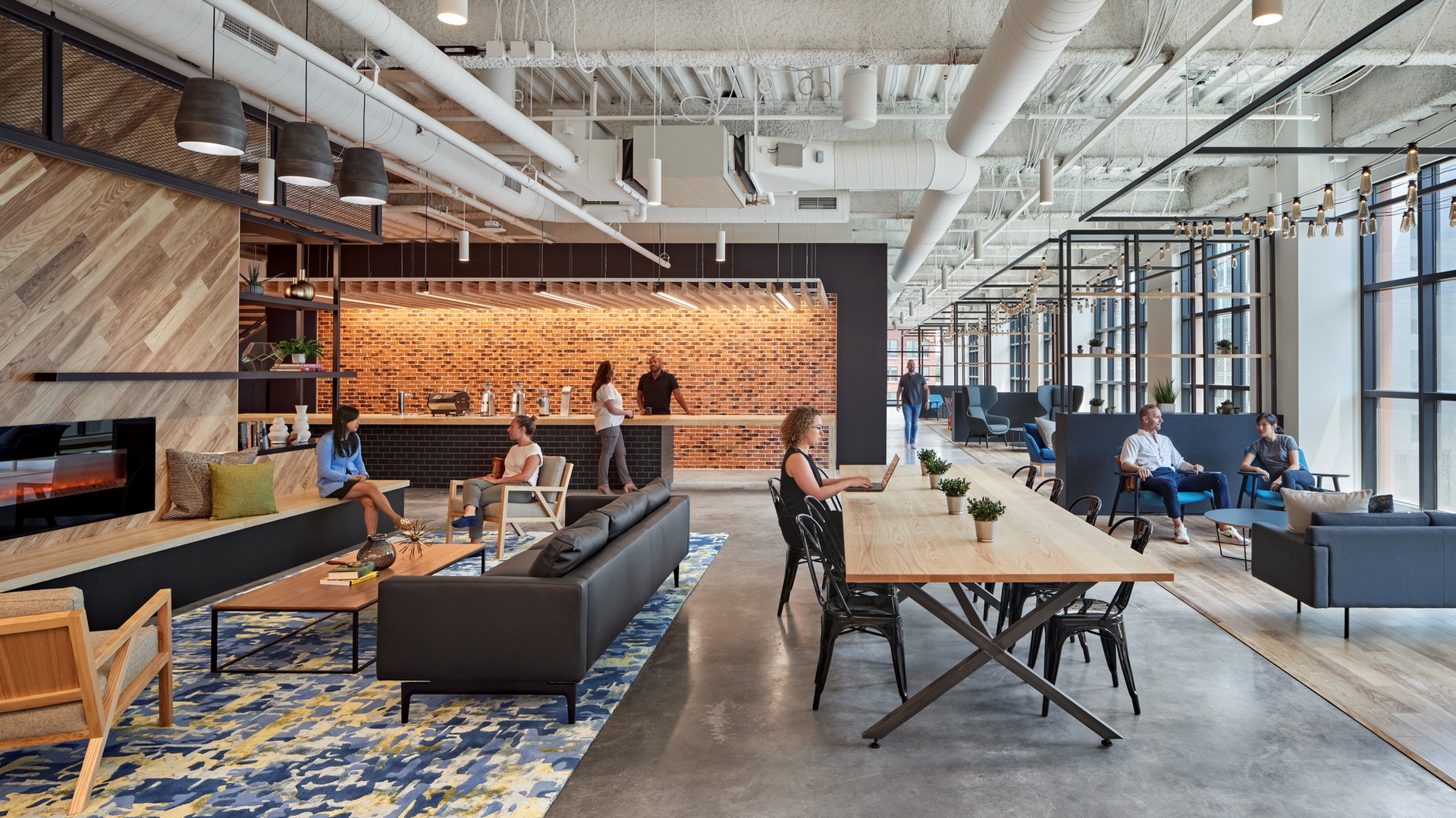
In today's modern era, technology plays a crucial role in nearly every aspect of our lives, including office interior design. Gone are the days of traditional office spaces with mundane furniture and limited connectivity.
Technology integration in office interior design has revolutionized how we work, creating smart and connected spaces that enhance productivity, collaboration, and overall employee well-being.
In this blog post, we will explore how technology is shaping the future of office interior design and transforming work environments into dynamic and innovative spaces.
Creating Interactive Workspaces
With advancements in technology, office interior designers now have the ability to create interactive workspaces that adapt to the needs and preferences of employees. For example, touchscreen displays and interactive whiteboards can be integrated into conference rooms, fostering collaboration and enhancing presentations. Similarly, smart lighting systems that automatically adjust brightness and colour temperature based on the time of day can be installed, creating an optimal working environment. These interactive elements not only improve the functionality of the workspace but also add an element of excitement and engagement for employees.
Enhancing Connectivity and Collaboration
Technology has brought us closer together, even in the workplace. The integration of Wi-Fi networks, video conferencing systems, and cloud-based collaboration tools have transformed how we communicate and work with colleagues, regardless of physical location. In terms of office interior design, this means creating spaces that support seamless connectivity and collaboration. For instance, open floor plans with strategically placed power outlets and wireless charging stations enable employees to connect and work together effortlessly. Additionally, dedicated spaces for virtual meetings equipped with high-quality audio and video equipment facilitate effective communication with remote team members.
Boosting Productivity and Efficiency
Technology has also significantly boosted productivity and efficiency in the workplace. For example, the introduction of smart automation systems has streamlined routine tasks and processes, allowing employees to focus on more meaningful work. These systems can control lighting, temperature, and even desk settings, personalised to each individual's preferences.

By removing the need for manual adjustments and minimising distractions, employees can work in an environment that is conducive to productivity and creativity. Furthermore, the use of smart sensors can help optimise energy usage by adjusting settings based on occupancy, resulting in cost savings and reduced environmental impact.
Prioritising Employee Well-being
Another important aspect of office interior design is prioritising employee well-being. Technology has played a significant role in this regard by introducing tools and features that promote health and comfort. For instance, ergonomic furniture, such as height-adjustable desks and ergonomic chairs, can be integrated into the workspace to support proper posture and reduce the risk of musculoskeletal issues. Additionally, smart air purification systems and biophilic design elements can enhance indoor air quality and bring elements of nature into the office environment, positively impacting employee health and well-being.
Embracing Sustainability and Green Design
Technology has also opened doors for sustainable practices and green design in office interior design. Energy-efficient lighting systems, smart thermostats, and occupancy sensors can help reduce energy consumption and minimise the carbon footprint of the office space. By integrating sustainable materials and recycling programs, the office interior design can promote responsible consumption and waste reduction.
Additionally, tracking and monitoring systems can provide real-time data on energy usage, allowing organisations to identify areas for improvement and implement strategies to further reduce their environmental impact.
Conclusion
Technology has undoubtedly revolutionised office interior design, creating smart and connected spaces that enhance productivity, collaboration, employee well-being, and sustainability. These innovative solutions have transformed traditional office environments into dynamic and flexible workplaces that adapt to the needs and preferences of employees. By incorporating technology into office interior design, organisations can not only provide a more engaging and efficient work environment but also showcase their commitment to innovation and employee satisfaction. As we move forward, it is clear that technology will continue to play a pivotal role in shaping the future of office spaces.


































